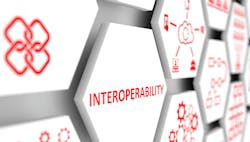Do you pledge automation allegiance to one provider or a multiple vendor solution?
For the design and implementation of industrial automation systems, sourcing from one supplier might save time in development and setup. Yet, for some system integrators, versed in numerous platforms, they can choose the best components from each class and weave them together in one harmonized solution.
Is one model better than the other? For three system integrators—BW Integrated Systems, Hargrove Controls + Automation and Prism Systems—the answer is no; the choice depends on the application and many factors about the individual project and end user.
Also read: Jack of all brands, or master of one?
John Elias, engineering manager at Prism Systems, says one supplier vs. multiple depends on the solution. “If all things are equal, choosing a single automation supplier has its advantages, but it is not required,” he explains. “Choosing a single platform simplifies design and specification.” A lot of the upfront tasks involved with determining if these things will work together have already been done.
A single platform can also help integrators keep the project scope more focused. “This is particularly important when you want to select a technology, like motion from the catalog to leverage built-in capabilities that are only available with a homogeneous architecture,” Elias says.
However, advances in system bus standards have made mixing components easier, Elias adds. “In particular, those that are Ethernet-based typically support cross-platform compatibility,” he says. This means designers can choose the best components or subsystems from multiple vendors and know that all will work together with a little effort. “Ultimately, each project is different and has to be approached that way,” Elias says.
Heath Stephens, PE, digitalization leader at Hargrove Controls + Automation, says no one vendor does it all for all applications. “There’s certainly value in sourcing your technology from a single vendor, but typically, no one vendor has all the technology you will need for a successful project,” Stephens says. “While you often don’t need the newest technology for every solution, it’s important that what you use is fit for the purpose.”
Daniel LoRusso, director of system sales, North America, at BW Integrated Systems, agrees that good examples exist in both styles of execution. “The decision between the two should be decided by the strength of the end user’s engineering group and their existing supplier relationships,” LoRusso says. “In either case, it’s important to select equipment or system suppliers with a proven track record of providing the scope you’ve selected for them.” The value of a vendor isn’t solely in its technical expertise, LoRusso says, but in the vendor’s ability to understand the specific project, the desired outcome and the impact on the business and its stakeholders.
Similarly, LoRusso says, hands-on training from the manufacturer is necessary. Likewise, all the training in the world will do no good, unless the end-user team, from top to bottom, is fully engaged in the education process. Long-term training after the initial setup is also crucial, LoRusso says. “Initial training through the startup and commissioning phases of a new system or machine is critical. Oftentimes, follow-up support/training is missed, and so is the opportunity to solidify key operating and maintenance procedures,” he says.
As a system integrator, having expertise in one manufacturer’s platform can reduce the ongoing cost of training and support. “Any incremental technology advantage provided by another vendor needs to be weighed against this training and support cost,” says Stephens. “Too often project teams get focused on the short-term costs of equipment without a view of the sustained investment cost.”
In the name of long-term value and lower cost, Stephens says, off-the-shelf is preferable to from-scratch solutions. “From-scratch solutions require a continuous investment in knowledge transfer for us and the client, and they can drive up long-term costs of those solutions,” he adds. “While plug-and-play components often fail to live up to the name, these types of solutions are usually simpler to design and maintain for all parties.” Vendors should win repeat business because customers are happy with their products and projects, not because vendors have “a business model based on locking customers into black-box support,” Stephens says.
Elias says Prism Systems engineers are trained on as many automation platforms as possible. With the ability to design, code and maintain most major platforms, this provides as many options as possible to customers and, hopefully, the best choice for each end user.
For packaging equipment, LoRusso says, low-code/no-code solutions are rarely used, as the ever-changing customer demands on packaging lines and a variety of primary and secondary packaging requires equipment and systems to be highly dynamic. “However, the use of tried and trusted add-on instructions (AOIs) or blocks of reused code is becoming more and more prevalent,” LoRusso says. “It’s important to find a supplier that builds custom equipment using trusted program blocks, modular mechanisms and intuitive user screens.” He calls custom engineering for a packaging operation “table stakes,” where the investment is often made upfront and for the long term. Implementing new engineering and applying trusted technology with experience defines a marquis supplier, LoRusso says.
At the end of the day, a knowledgeable system integrator is more key to a successful project implementation than vendor support, says Stephens. “While vendor support is helpful, their knowledge of every company product is often siloed, and they frequently have little to no knowledge of alternative solutions on the market from other vendors,” he says. Vendors are also rarely local, he adds. “Our experience is that vendor support is most useful to answer specific technical questions, but they are not a good source for overall system design and implementation,” Stephens says.
About the Author
Anna Townshend
Managing Editor
Anna Townshend has been a writer and journalist for 20 years. Previously, she was the editor of Marina Dock Age and International Dredging Review, until she joined Endeavor Business Media in June 2020. She is the managing editor of Control Design and Plant Services.

Leaders relevant to this article:


